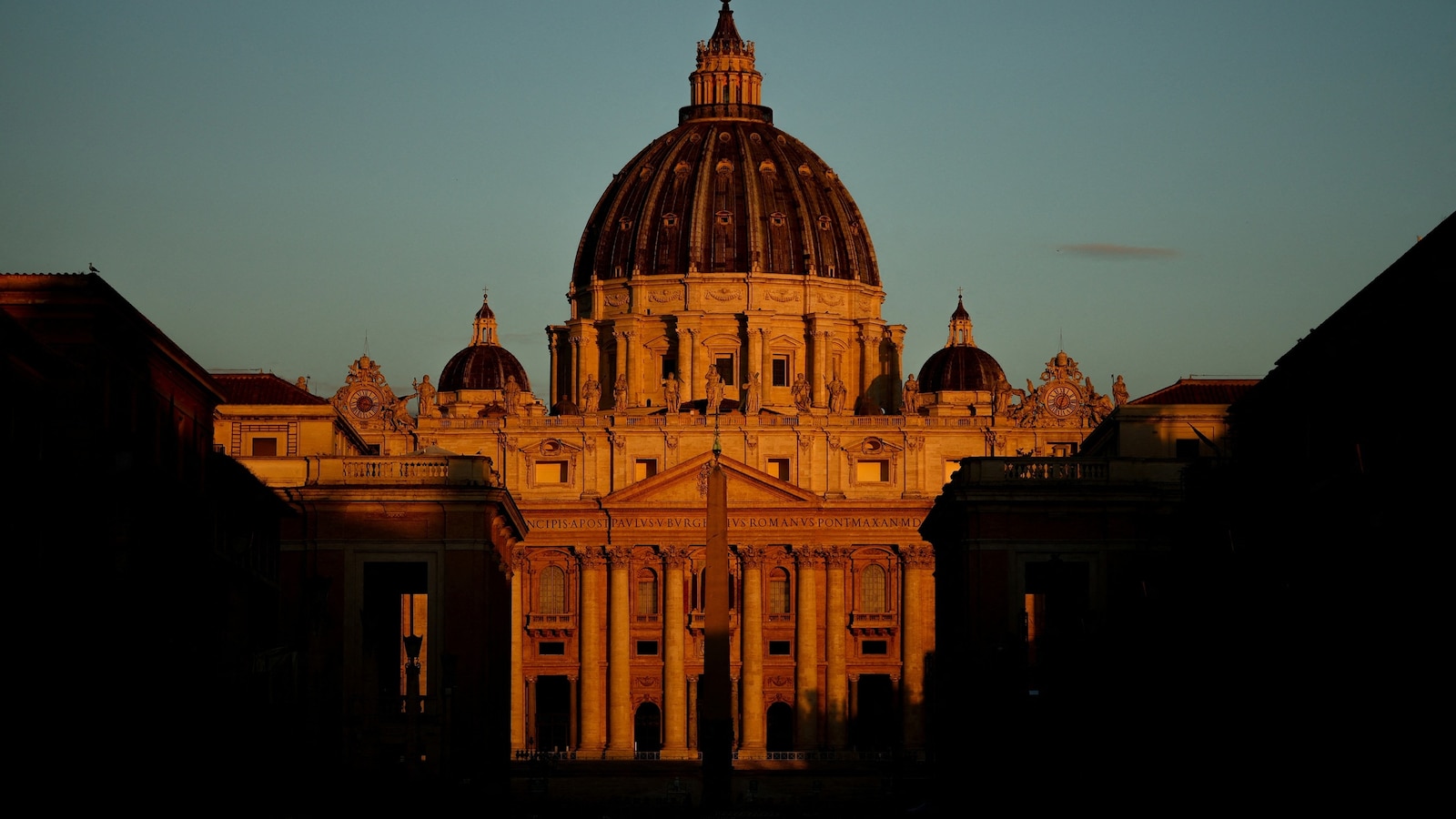Each member of the 133-cardinal conclave will write his choice on a paper ballot slip, fold it once in half and carry it held aloft between two fingers to the Sistine Chapel altar, where he will deposit it in a special urn placed there. In order to make the balloting secret, conclave members are instructed to write their votes “as far as possible in handwriting that cannot be identified as his.”
Any conclave member who cannot attend in person due to illness or infirmity will cast their ballot from their room in the Domus Marthae Sanctae, where they’re collected, placed in a lockbox and carried to the Sistine Chapel.

Cardinal Jose Tolentino de Mendonca (L) walks with Cardinal Gianfranco Ravasi at the Vatican, on May 6, 2025.
Bernat Armangue/AP
The votes are then counted by three scrutineers who affirm what is written on each ballot and then announce it to the conclave, so the cardinals can record the votes themselves. If the number of ballots cast is different than the number of cardinal electors, those ballots are discarded and burned and a new vote taken.
The candidate who secures two-thirds of the votes is elected pope.
Up to four rounds of voting can typically take place in a day. If no clear choice has emerged after three days, balloting is suspended for 24 hours to allow cardinal electors time to reflect. Another seven rounds of balloting then takes place, followed by another break, and so on.
If no pope is elected after 33 or 34 votes — generally about 13 days — then a new rule introduced by Pope Benedict XVI decrees that the two leading candidates as determined by previous ballots will engage in a runoff vote.
The candidates themselves, if they’re members of the conclave, cannot vote in the runoff but are present for it. Whichever candidate receives the necessary two-thirds majority of the votes is the new pope.
-ABC News’ Christopher Watson

